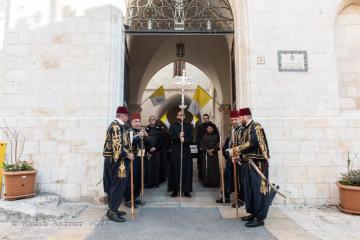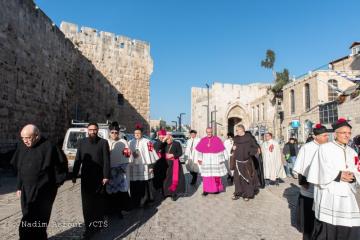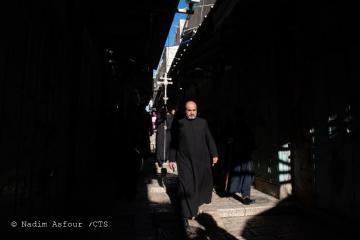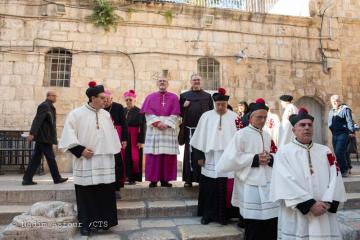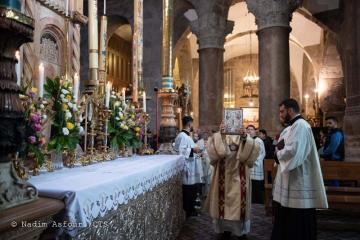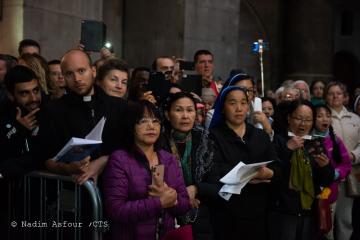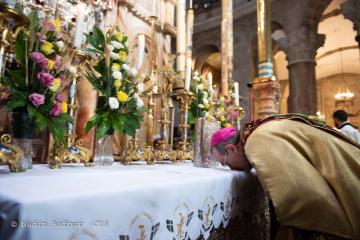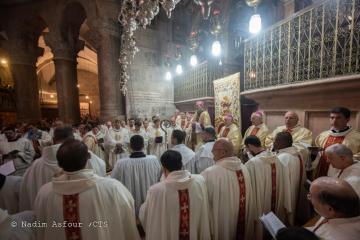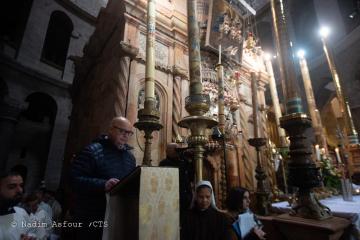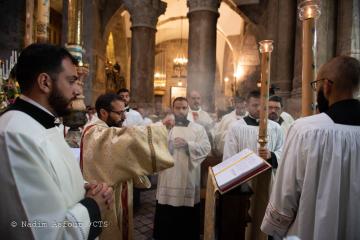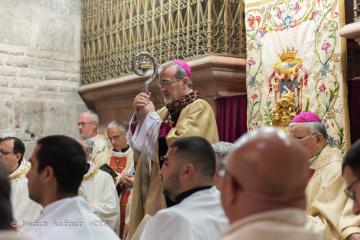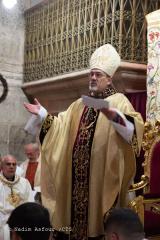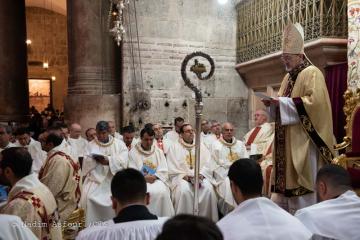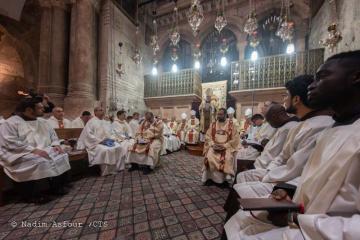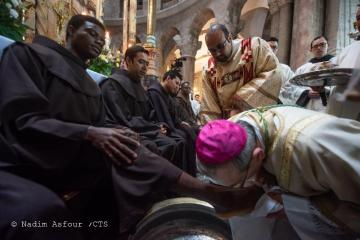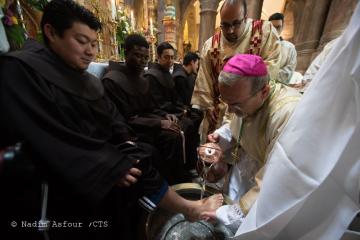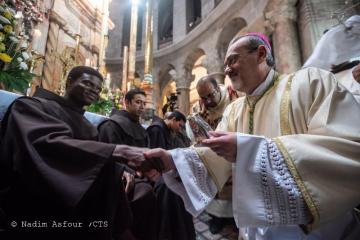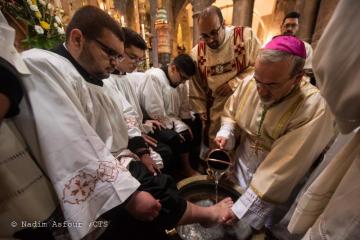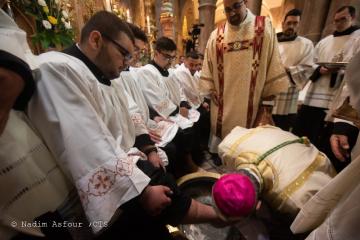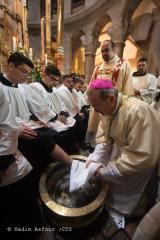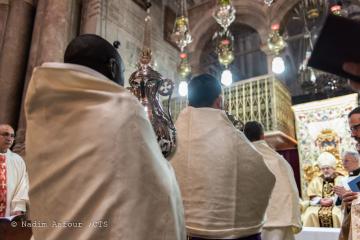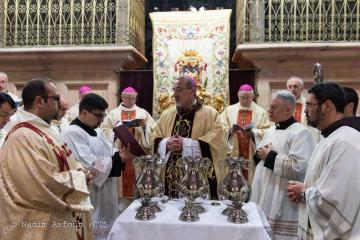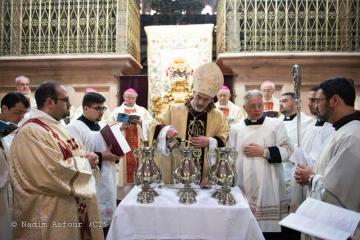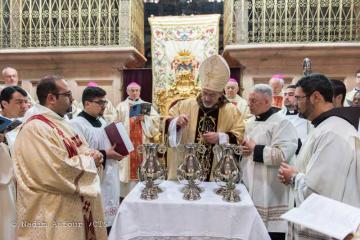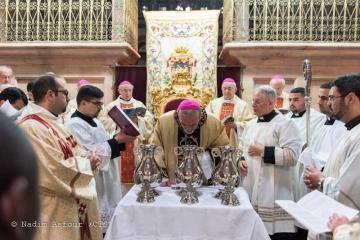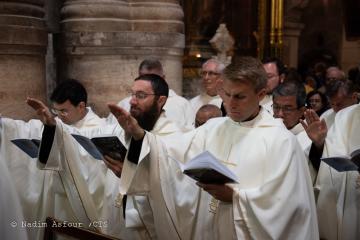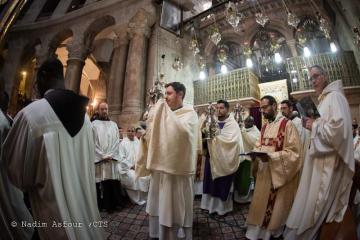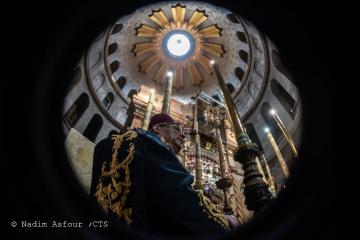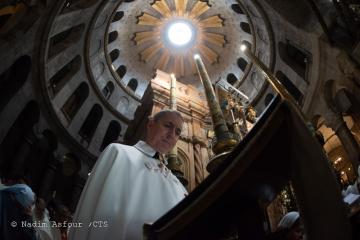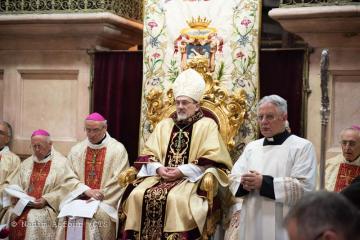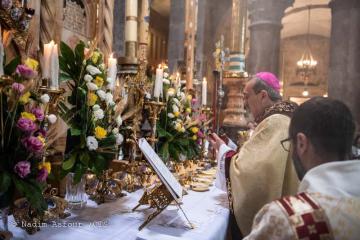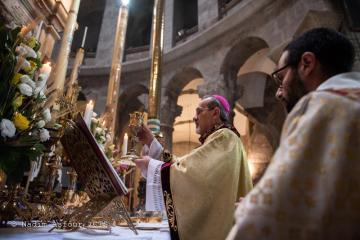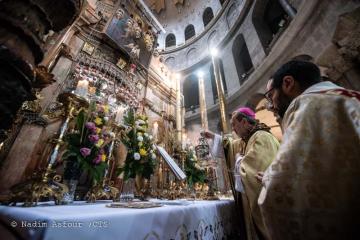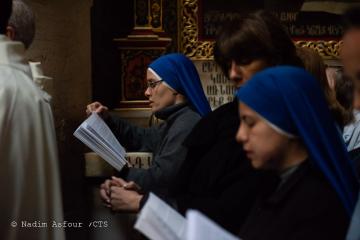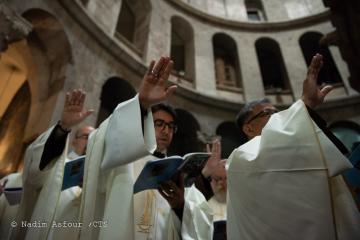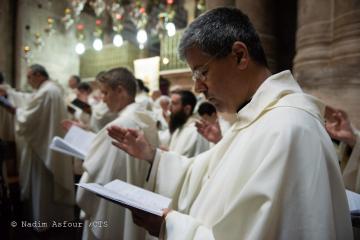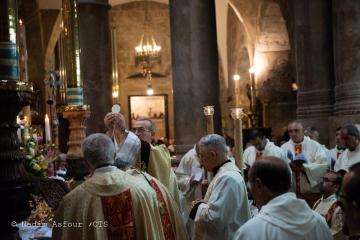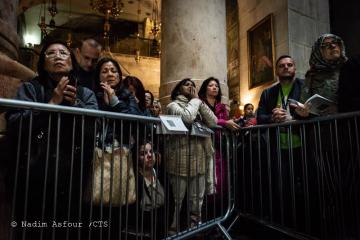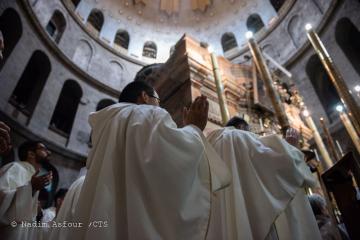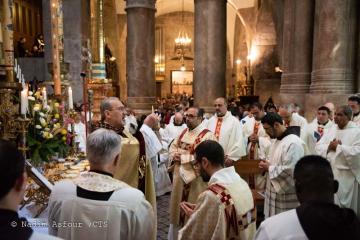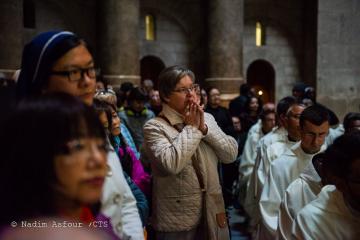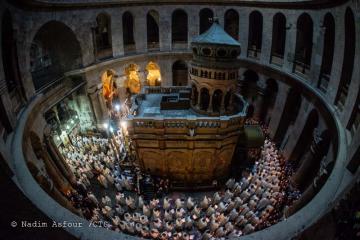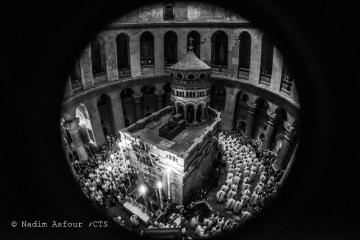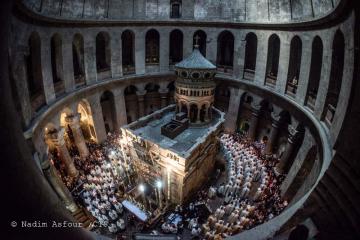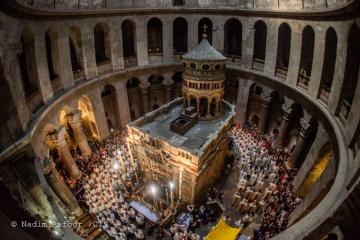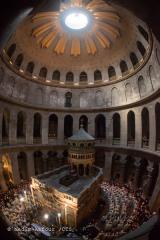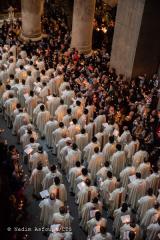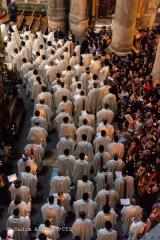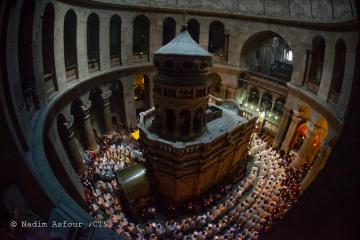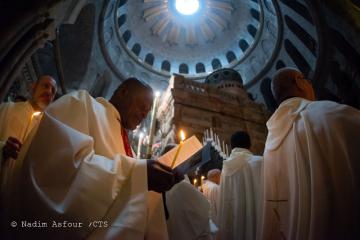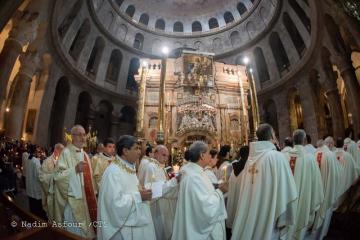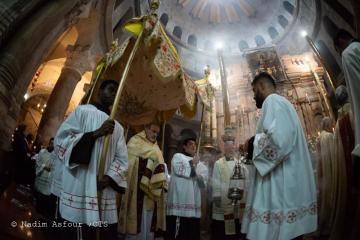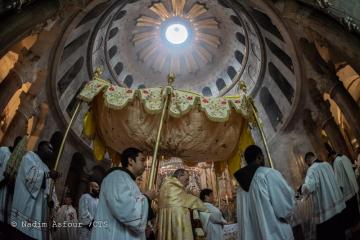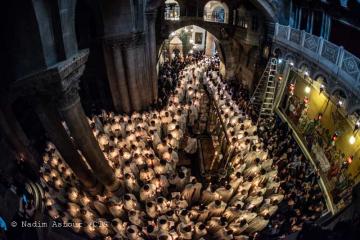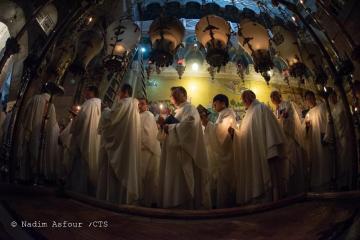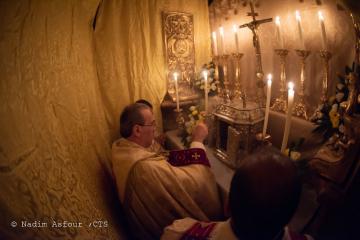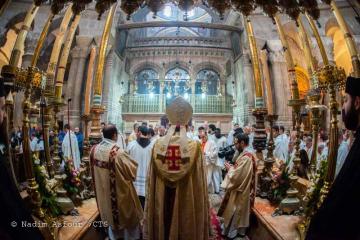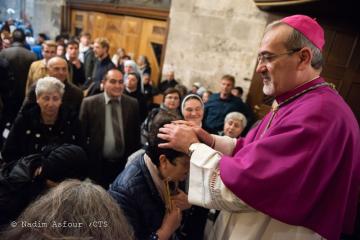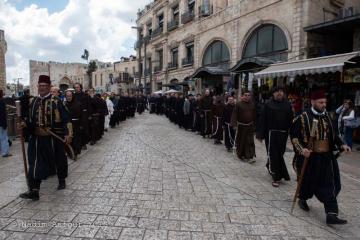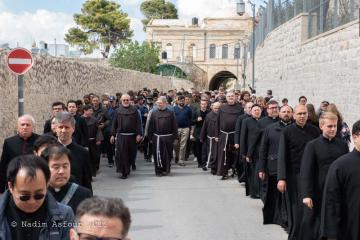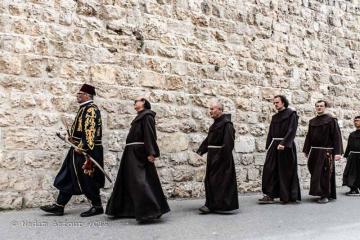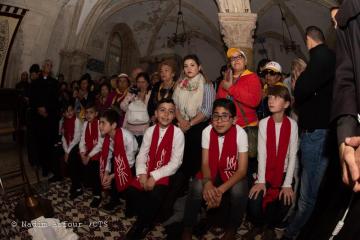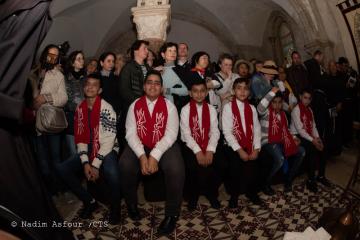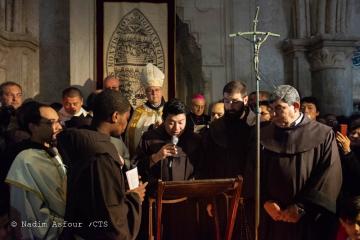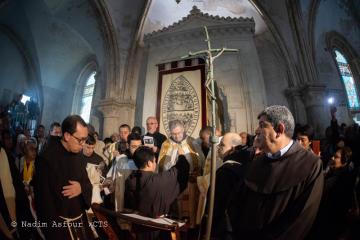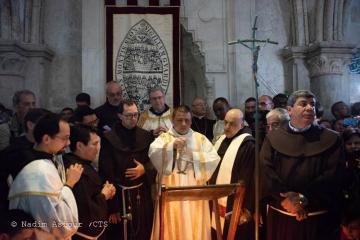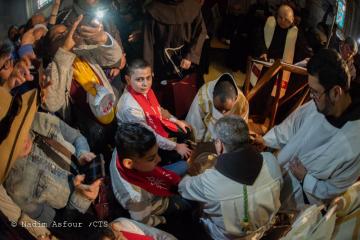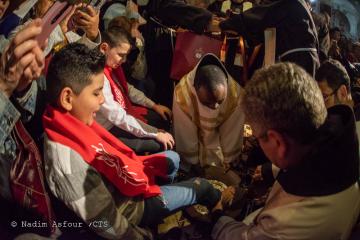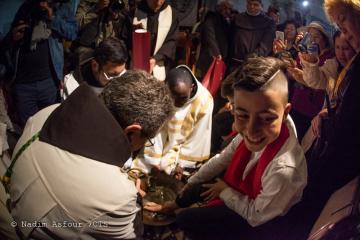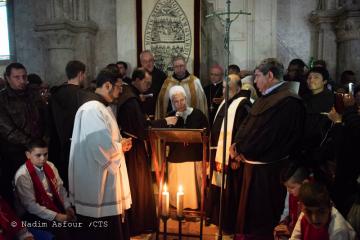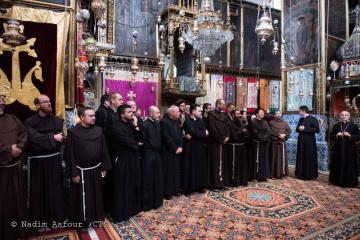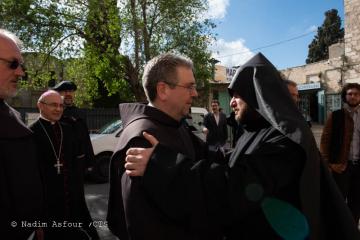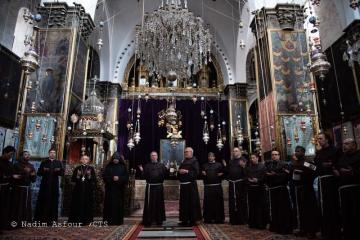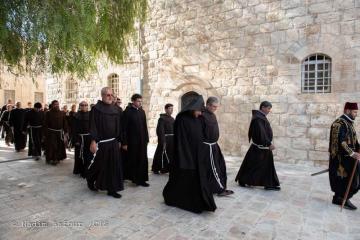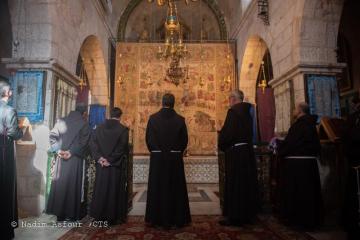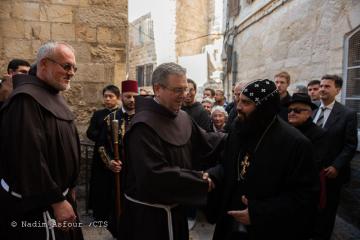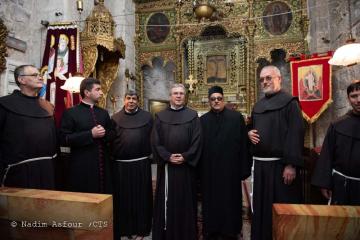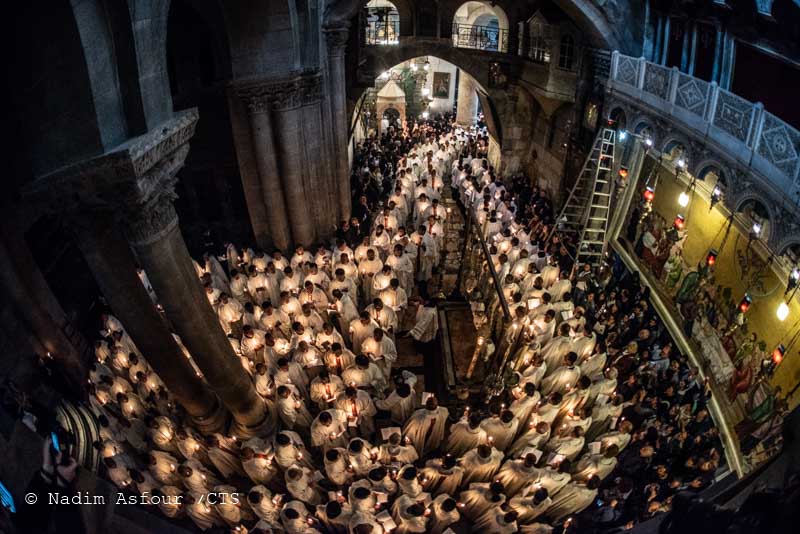
Holy Thursday for Catholics in Jerusalem opens with the celebration of the Apostolic Administrator at the Holy Sepulchre, continues with the ritual of the foot washing bythe Custos of the Holy Land at the Cenacle and ends with the Hora Sancta at Gethsemane.
“To find again the astonishment, almost the scandal before Christ who, in the water of the washing of the feet, in the bread and in the wine of the Eucharist, in entrusting His grace to our priestly ministry surrenders himself into our hands and lets himself be nailed to the cross of our sin.” This is the exhortation that the Apostolic Administrator of the Latin Patriarchate, Mons. Pierbattista Pizzaballa addressed to the faithful and the concelebrants at the Holy Sepulchre of the Mass in Coena Domini and the Chrism Mass, with which the triduum of celebrations which will lead to the announcement of Easter, starts.
From the Edicule where the mortal body of the Messiah was laid, Mons. Pizzaballa, in his homily, underlined the importance of the washing of the feet and of Peter’s acceptance after his astonishment at the fact that Jesus washed his feet. “With Peter,” said the Apostolic Administrator, “we can go from incomprehension to enthusiastic acceptance, to become – in our weakness – each of us according to our condition and vocations, principle and visible foundation of communion and of fraternity.”. Pizzaballa addressed his message in particular to the two hundred and forty or so priests of the diocese and the whole world who crowded the Holy Sepulchre in the celebration of their ministry, at the time of the renewal of their promises. “Like Peter,” Pizzaballasaid, “we delude ourselves that, to live, or to survive, we have to occupy space for ourselves instead of making room for the other; that the assertion of our identity comes before the relationship with the person at my side. Even for us, priests, at times the ministry is confused with the exercise of power, going as far as abuse, as we have sadly seen too often recently, instead of with service to the lives of people. More than serving the Gospel,” he concluded, “we may use the Gospel for ourselves and for our interests. We have been asked to lose our life for Christ and perhaps, sometimes, we have preferred losing Christ to preserve our lives.” The Celebration included the rite of the washing of the feet of the friars and seminarians of the diocese and the blessing of the oils and of the chrism which will be used during the year in the liturgies. The song of Tantum Ergo accompanied the solemn Eucharistic procession which went round the Ediculeof the Holy Sepulchre twice.
The afternoon took place according to tradition: first the symbolic handing over of the keys of the Holy Sepulchre to the Custodial Vicar Fr. Dobromir Jasztal by the Muslim family that holds them and the reopening of the Sepulchre for a few minutes, then the celebration of the washing of the feet at the Cenacle.
Many pilgrims took part in this moment in the place where Jesus celebrated the Last Supper. The Custos of the Holy Land, Fr. Francesco Patton, who washed the feet of twelve children of the parish of St Saviour who are getting ready for confirmation, presided the liturgy. The passages from the Gospel listened to narrated the events featuring the Cenacle and which are celebrated today: the washing of the feet, the institution of the Eucharist and the birth of the Church.
At the end of the liturgy, after the exchange of peace and the prayer of Our Father, the Franciscans of the Custody with the faithful following them, made the traditional pilgrimage to the Cathedral of St James and the Church of the Archangels, both of the Armenian rite, where the Franciscans stayed for six years immediately after having been chased out of the Cenacle. The conclusion of the pilgrimage was at the SyriacOrthodox Church of St. Mark, where a monk introduced the prayer with a song in Aramaic.
The last part of Holy Thursday is that of the evening with theprayer of the Hora Sancta at Gethsemane, to remember how the Lord suffered and wept and to enter the mystery of the pain of Jesus our Saviour in an even better way.
Nello del Gatto - Giovanni Malaspina


